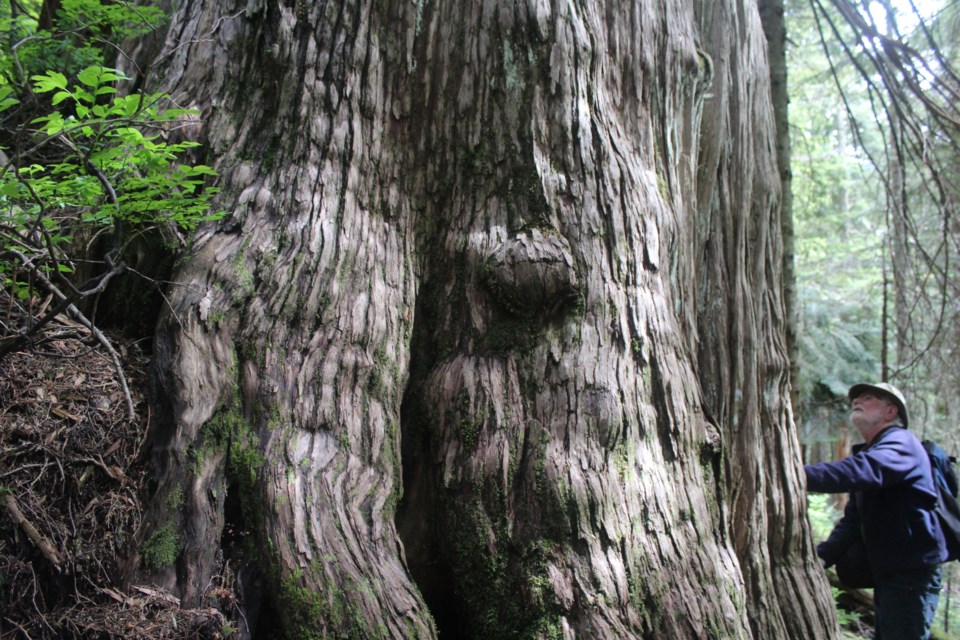A contentious cutblock in the Dakota Bowl area of Mount Elphinstone will be protected under an agreement between Squamish Nation and the province.
The cutblock, known as BC Timber Sales Licence A87126, was removed from the BC Timber Sales operating schedule last year, and it is now off the auction block for timber harvesting entirely. The cutblock covers approximately 70.9 hectares, according to the Ministry of Forests, Lands, Natural Resource Operations and Rural Development.
On March 1, the Squamish Nation announced a new agreement with the province to protect the Dakota Bowl and collaborate on what the land use designation will be in the future.
Squamish Nation councillor and spokesperson Syeta’xtn, also known as Chris Lewis, told Coast Reporter that this agreement has been a decade in the making.
“[I] want to recognize all of the leaders and all of our technical people that have worked on this one,” he said.
The Dakota Bowl area is significant to the Squamish Nation, he said, because it’s one of the last untouched areas in their territory. Not only are there culturally modified trees that indicate the Squamish Nations’ longstanding use of the area, but old growth yellow cedar, which is particularly valuable to the Squamish Nation for its traditional use in making canoes, paddles and other items.
The alpine area, Lewis added, is also important for gathering and harvesting not only the cedar, but berries and other culturally important plants. It also serves as a wildlife habitat. Just below the cutblock, Lewis said, you can see the impact logging has had on the second- and third-growth areas.
As recently as last year, the cutblock was included in the BC Timber Sales operating plan for harvest in 2021. But in September 2020, the province confirmed that the lot had been removed from the sale list. This decision came after 77 culturally modified trees (CMTs) in Dakota Bowl were added to the Provincial Heritage Register, following a nearly 10-year battle for the landmarks to be recognized.
“The nation really wanted to ensure that we were protecting those areas because it’s a place of cultural trends, transmission, along with importance around gathering, ensuring that we’re keeping the integrity of who we are as Squamish people,” Lewis said.
He called the removal of the cutblock from the BC Timber Sales inventory a “first critical step” in determining the future of the area. The nation and province will negotiate and discuss what kinds of developments or restrictions will be in place. With similar agreements, the Squamish Nation has turned other areas into old growth management areas, wildlife habitat areas or Squamish Nation areas of interest.
“It’s really a kind of a testament for everyone that has come together to work towards this. Multiple groups had to come together for this to happen,” Lewis said.
One of the other groups that advocated for years to protect the Dakota Bowl area is Elphinstone Logging Focus (ELF). Contacted March 1, ELF’s Ross Muirhead hadn’t yet heard of the new agreement regarding the Dakota Bowl, or as ELF refers to it, the Dakota Bear Sanctuary.
“Well, this has been a day we’ve been waiting for a long time,” Muirhead told Coast Reporter. He believes that it may be the most deferred cutblock in B.C.
“We’re proud of the work that we’ve done to bring that particular forest to the level of attention that it gathered,” Muirhead said. Over the years, the organization has taken hundreds of people to Dakota Bowl to experience the significance of the area, and hired experts to examine and report on archeological findings and local bear dens.
“The people who have walked into that forest are going to be really relieved to know that it's not going to be clearcut.”


